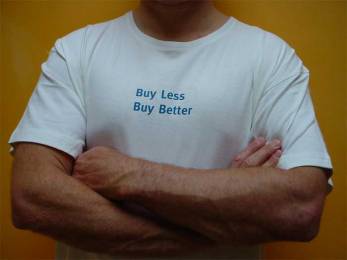
The home, household goods & services
Tighter Security
A strong demand for better home security is seeing a surge in different electronic door locks. Proving especially popular are those that use keyless entry or those that can be installed on existing doors. Tokyo-based Secure Inc’s Selfrico system is designed to provide added security to a traditional lock and is attached to the top of the door. It uses an infrared remote control to move a latch into place, which prevents the door from opening even if the conventional lock system is unlocked. YKK AP Inc’s electronic door locks are opened by smart-card-equipped mobile phones, which are activated by downloading identification codes. Once set up, the handset only needs to be brought near the system for it to unlock. The company hopes the convenience of the mobile phone operated lock will entice customers, with each system able to register up to 20 phones for use as keys. For those without compatible phones, a smart card is included with the system. Alpha Corp has put its experience in automobile lock systems to good use with the development of the Alpha Passive Key. Based on the design for keyless car entry, the lock system requires the push of a button on the small remote, which doesn’t need to be taken out of a bag or pocket. A key is provided to unlock the door in the case of power failure, and any attempts to unlock the door without the remote or key will sound an alarm.
Ref: The Nikkei Weekly (Jap), 18 June 2007, ‘ Electronic door locks fight crime’.
Y. Uruma. www.nni.nikkei.co.jp
Search words: Security, locks
Trend tags: Cocooning, anxiety, safety
Source integrity: *****
Another Bright Idea …
Though light emitting diodes (LEDs) are still generally too expensive for use within the home, the village of Torraca in Italy is claiming the title of the world’s first LED city, with all the town’s streetlights using the energy-efficient lights. Italian start-up Elettronica Gelbison, who installed the LEDs, make parts for the automotive industry, where LEDs are already used in taillights (with headlights soon to follow). New companies, such as Gelbison, are pushing to get in on the market for energy-efficient lighting, as are electronics giants including Philips. Philips has acquired five lighting firms in recent times in an effort to increase sales of LEDs and find innovative ways to use the product. Their flexibility means LEDs can be incorporated into a wide range of consumer products (which means more sales for Philips) and even implanted into furniture or walls.
Ref: The Economist (UK), 1 December 2007, ‘Bright idea’. www.economist.com
Search words: Lighting, lights, lamps, lightbulbs
Trend tags: LED
Source integrity: *****
Neighbourhood Networks
Dutch start-up Qurrent took out 2007’s Picnic Green Challenge for sustainable energy with their model for a renewable energy network. The decentralised system aims to even out the peaks and troughs associated with energy generation. Homes with solar panels or wind turbines can often find they have not enough energy at one time and a surplus at others. Traditionally the surplus has been sold back to the main grid, but this process can result in energy losses of up to 30%. This is where Qurrent comes in. A group of houses collectively creates renewable energy, and instead of the surplus from each house being sold back to the main grid, it is first shared with other houses on the network. The ebbs and flows are managed by the Qbox in each house, which is linked to a central Qserver. The Qbox monitors the particular needs of each house then adapts energy usage in accordance. For instance, the Qbox can switch on the washing machine when there is a surplus of energy or when demand is low.
Ref: EcoGeek (US), 6 November 2007, ‘Energy Sharing Ready for Prime Time’, John Barrie. www.ecogeekorg ; Springwise (Neth), 15 January 2008, ‘Neighbourhood approach to renewable energy’. www.springwise.com
Search words: Energy, networks
Trend tags: Sustainability
Source integrity: Various
The Big Switch
A new energy law introduced in the US could revolutionise the way light bulbs and home appliances are designed. The law, which will mainly apply to light bulbs, is designed to reduce energy use and therefore greenhouse gas emissions. If just one traditional bulb in each American household was replaced by a compact fluorescent bulb, the country would save $600 million and have the affect of taking 800,000 cars off the road. However, the reluctance of many customers to make the switch prompted the creation of the new law, which requires new light bulbs to have lower energy requirements, while emitting the same amount of light. The law is to be phased in gradually, but by 2020 the electricity usage of a light bulb is expected to be just a quarter of what it is now. While the compact fluorescent bulb seems to be the ideal solution to the energy problem, there are some hurdles to overcome. Bulbs often fade before burning out, and are dangerous if broken due to the inclusion of mercury. Customers have also complained about the bulbs being too white and too slow to switch on, problems which manufacturers claim they will address. Light emitting diodes could also be on the horizon, though they are currently too expensive for domestic use. LEDs contain no hazardous material and use only half as much energy as fluorescent bulbs. The new energy law also addresses white goods including washers and dryers, though the changes there will be less radical, with the current energy-efficient standards becoming the new minimum standard.
Ref: Washington Post (US), 20 January 2008, ‘Power Switch’, Steve Mufson. www.washingtonpost.com
Search words: Lighting, light bulbs, lamps, energy
Trend tags: LED
Source integrity: *****
